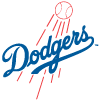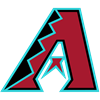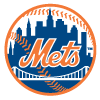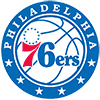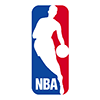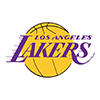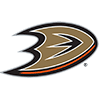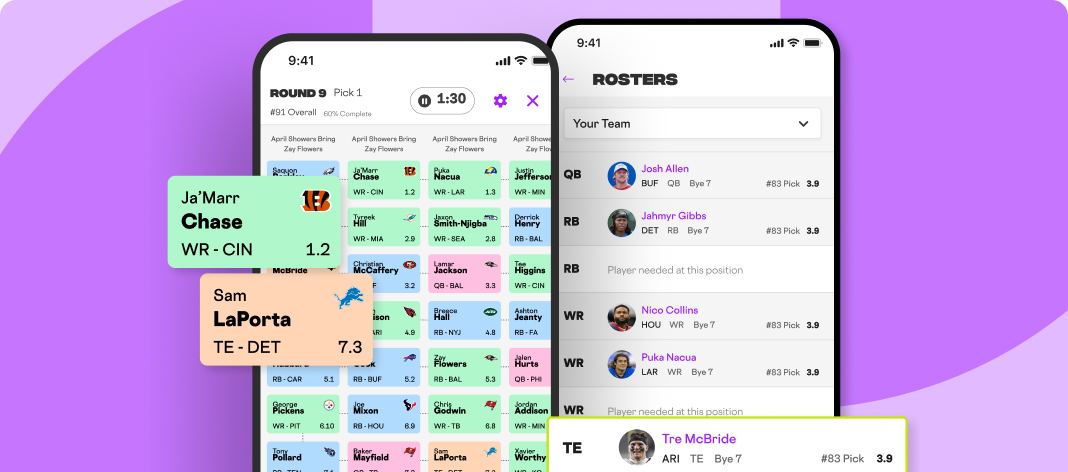Mound Musings is all about interaction. I appreciate the questions, and discussing whether this guy or that guy is the best pitcher to have on a roster is what it's all about. That said, over the past couple of years, "Life, the Universe and Everything," has gradually become a semiregular part of Mound Musings. As we try to answer the ultimate question.
This issue features a recap of a favorite summer event – the Draft Combine. That's where they gather most of the top amateur talent in baseball in one place, and then let front office staff, scouts, managers, coaches and baseball junkies like me drool all over them. How can it be any better than that?
Remember, I'll occasionally dedicate this space to elaborating on questions from you, the readers. Ask away! Okay, without further ado, let's go:
Combine Commentary: Some pitchers you need on your watch list.
- Kade Anderson (LSU) – I'm going to give my vote to Anderson who really came into his own this year. The southpaw went 11-1 with a 3.44 ERA and 170 strikeouts over 110 innings. Check out his College World Series start against Coastal Carolina. He dominated even though he didn't have his best stuff.
- Liam Doyle (Tennessee) – Hmmm. Seems like lefties are taking over the list! Doyle really impressed me with his tenacity and mound mayhem. Known as the "Madman," he has earned that tag. His best is a high 90s fastball with crazy movement. He led collegiate baseball
Mound Musings is all about interaction. I appreciate the questions, and discussing whether this guy or that guy is the best pitcher to have on a roster is what it's all about. That said, over the past couple of years, "Life, the Universe and Everything," has gradually become a semiregular part of Mound Musings. As we try to answer the ultimate question.
This issue features a recap of a favorite summer event – the Draft Combine. That's where they gather most of the top amateur talent in baseball in one place, and then let front office staff, scouts, managers, coaches and baseball junkies like me drool all over them. How can it be any better than that?
Remember, I'll occasionally dedicate this space to elaborating on questions from you, the readers. Ask away! Okay, without further ado, let's go:
Combine Commentary: Some pitchers you need on your watch list.
- Kade Anderson (LSU) – I'm going to give my vote to Anderson who really came into his own this year. The southpaw went 11-1 with a 3.44 ERA and 170 strikeouts over 110 innings. Check out his College World Series start against Coastal Carolina. He dominated even though he didn't have his best stuff.
- Liam Doyle (Tennessee) – Hmmm. Seems like lefties are taking over the list! Doyle really impressed me with his tenacity and mound mayhem. Known as the "Madman," he has earned that tag. His best is a high 90s fastball with crazy movement. He led collegiate baseball with an insane 15.43 K/9 for the Vols.
- Tyler Bremner (UC Santa Barbara) – With him it's all about the change-up. He has a nice mid-90s fastball and a solid slider, but they primarily are used to set-up his change. Notably, he's also very versatile, having started, pitched in long relief and closed in his college career, while taking it all in stride. A bit of a sleeper.
- Seth Hernandez (Corona High School, California) – There are a lot of analysts who have Hernandez at the top of this year's class. That's high praise for a high school kid, but it could be legitimate. His fastball touches 100 mph and he has a well-developed change, so we'll see (see more on Hernandez below)
The Combine is the first of three red-letter days for me every summer. It will be followed by the First Year Player draft and then the Futures Game. They are all opportunities to look at the up-and-coming young arms. Of course, the Combine and I exist in a love/hate relationship. Obviously, I love watching the kids pitch, but I hate that there are so many players there you almost always get to see only a few pitches each. That's just a tease.
One of the biggest benefits is the initial disclosure of very young pitchers, even guys still in high school, who will soon find themselves on the rosters of major colleges or even in the minor league systems of pro teams. Let's look a little deeper at Seth Hernandez.
Hernandez just completed his senior year at Corona High School in California. He'll turn 19 in just a couple days (28 June), but he pitches much older. He went 9-1 with an 0.39 ERA and 105 strikeouts in just 53 innings. Those numbers tell us why it's difficult to evaluate high school pitchers. He has a four-pitch mix with a fastball that now touches triple digits. We're talking a man vs. boys scenario here.
Match-up Update: I have been preaching the philosophy of match-up pitching almost all year. It's not really a new approach, but I think it's becoming even more useful. With offensive explosions being the norm, we're looking for teams least likely to experience an offensive burst. At first, it seemed pretty easy (and effective). Pittsburgh, Chicago (AL), Colorado, Miami and the A's could usually be counted on to snooze through their at bats, but it seems to be more and more unpredictable. Why?
I've got a theory. I'm calling it Fielding Follies (see more below). A few days ago I watched a weak hitting team that had scored a total of two runs across their previous three games, put up 11 runs in a game. It included a seven-run inning with A) an outfielder taking a bad route on a fly ball that fell in, B) the third baseman letting a groundball play him, backing up and then throwing late to first, C) three players going out into short right field, then all watching as the popup dropped between them, and D) the short stop throwing about 10-feet wide of first base, failing to complete a double play that would have ended the inning. No errors. All seven runs earned. Ouch.
I wish I could fix it, but the reality is I have no control over the brainless antics and fielding foul ups or the ridiculous official scoring, so all I can do is swallow hard, buck up and keep on plugging. The theory is sound.
Fielding Follies: This is from last year, but sadly it still applies. In fact, it's getting worse. When evaluating a pitcher, I have long given a little extra credit to those lucky enough to have excellent fielders playing behind them – in particular good fielders up the middle at shortstop, second base and/or center field. Conversely, I would downgrade pitchers who had poor fielders manning those positions. For the majority, this was a neutral factor; it being neither a positive or a negative. That's not really the case these days. In the baseball world of the boring '20s, offense, or at least potential offense, is all that matters. Teams are now routinely stationing players anywhere and everywhere on the field, and whether they can catch or throw is irrelevant.
Maybe it's because their follies are more noticeable, corner outfielders are becoming more and more frustrating, and inconsistent scoring makes it worse. Often, if an outfielder doesn't touch the ball, it is scored a hit. Watching a fielder twist and turn in pursuit of what should be a fairly routine fly ball is painful – and it is likely to be even more painful for the pitcher's WHIP and ERA. That really gets old, and this season it happens routinely. My guys don't need help padding their WHIP.
Poor fielding in the outfield is but a small part of the fundamental collapse of MLB. I probably should flip those two words – it's the collapse of fundamentals. Statements like "hit the cutoff man," "get in front of that groundball – square, square," "pick up your coach on the bases," "run everything out," and "call the ball, so your teammates can hear you" were constants, like Vick's with a chest cold. You heard them so often you really didn't have to listen. You knew them. Okay, I'm really old, but I ask you younger guys, have these fundamentals been completely forgotten? I've even heard it said, if you can hit with power, they will find a place for you in the field. It used to be someone would commit a gaffe, and everyone would chuckle softly. It was rare, but someone would dog it to first base on a groundball. When his team took the field, he was missing and he was probably out of the lineup tomorrow, too.
You used to see a mental meltdown once every few games, but now, it's virtually every game; sometimes more than once an inning. It's like a remake of The Bad News Bears, complete with your basic nose-picking right-fielder, but these are not young kids in a scripted Hollywood comedy. They are supposed to be true professionals, the best of the best in the best sport on Earth. I have to say this, I'd be truly embarrassed, but nobody seems very concerned about fans laughing at them.
Pitching Coach = Difference Maker: I frequently mention an angle that has paid dividends for me over the years. I call it, "Changes in latitudes" referring to pitchers being traded to another organization. Obviously, some pitchers take a turn for the worse, but quite a few find success – sometimes significant success – and many times it can be attributed to new coaches. Obviously, it's not always the pitcher moving to a new home, sometimes it's the pitching coach and his assistants.
One of my longtime favorites is Brent Strom, currently with the Pittsburgh Pirates organization. Everywhere he lands the pitching seems to improve. Now, with a team that includes guys like Paul Skenes, Bubba Chandler and Mike Burrows, his presence could be impactful to say the least. It's hard to put a finger on how he exactly helps. It's related to mechanics. Sometimes it's a little more velocity or a little higher spin rate, but the bottom line always comes back to efficiency and command. Think about it.
Some Notable Rotation Ramblings:
- Didier Fuentes gets added to our watch list. The Atlanta kid got a spot start just a few days after his 20th birthday. The numbers were mediocre – four earned runs in five innings – but he missed his spot and gave up a three-run homer for most of that. I don't expect he'll take a regular turn, so this is for keeper leagues.
- Poor Emerson Hancock. The other day the Mariners hurler got to face the heavy hitting Cubs in Wrigley Field with gale force winds blowing out. He allowed nine runs, including four homeruns over four innings. I'd say that's a pretty good way to ruin your day. He's much better than that, so forgive this one.
- The Reds top prospect, Chase Burns, made his major league debut earlier this week against the Yankees. All in all, it was a nice beginning, as he struck out eight over five innings but was roughed up a bit in the fourth inning (including a phantom "triple") of a no decision. He certainly showcased his stuff.
- Once upon a time, I was intrigued with Baltimore's Trevor Rogers (he was with Miami in 2021). Then injuries set in, the velocity dropped and the performance tailed off. I watched his last start against Texas and it was like turning back time. The velocity and the solid results, were back. I'm intrigued – again.
Endgame Odyssey:
There is no more "maybe" surrounding Arizona's A.J. Puk. It's Tommy John surgery, so he's out this year and most of next. His primary caddy, Justin Martinez, is also hurt and likely out until September, leaving closing duties to set-up man in disguise Shelby Miller. In Texas, the ninth inning has been a work in progress all season, but with Chris Martin back in action, I have a hunch we'll gradually see him claim the gig. With Luke Weaver returning from the IL, the Yankees may use both him and Devin Williams in the ninth inning and let things sort themselves out. Calvin Faucher had been covering the ninth for Miami, but a few days ago, they switched up and Ronny Henriquez logged a save.
Find out which projected starters are going and when with RotoWire's Probable Pitchers page!








